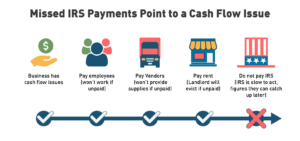
Self-employment offers freedom and flexibility, but it also comes with the responsibility of handling your own taxes. Unlike traditional employees whose taxes are withheld from their paychecks, self-employed individuals must calculate, report, and pay their taxes independently. This guide will walk you through everything you need to know about self-employment taxes in the U.S., including tax rates, deductions, and how to file.
Understanding Self-Employment Tax
Self-employment tax (SE tax) is a combination of Social Security and Medicare taxes. Traditional employees and employers split these taxes, but self-employed individuals must pay the full amount themselves. The self-employment tax rate is 15.3%, which consists of:
- 12.4% for Social Security (on earnings up to $168,600 for 2024)
- 2.9% for Medicare (with an additional 0.9% Medicare surtax on income above $200,000 for individuals or $250,000 for married couples filing jointly)
Who Pays Self-Employment Taxes?
You must pay self-employment taxes if:
- Your net earnings from self-employment exceed $400 in a year
- You work as a freelancer, independent contractor, small business owner, or gig worker
- You receive income from side hustles, consulting, or online businesses
How to Calculate Self-Employment Taxes
To determine your self-employment tax:
- Calculate Net Earnings: Subtract business expenses from total self-employment income.
- Apply the Tax Rate: Multiply net earnings by 92.35% (since you can deduct the employer-equivalent portion of your SE tax).
- Multiply by 15.3%: The result is the amount of self-employment tax you owe.
For example, if your net earnings are $50,000:
- 92.35% of $50,000 = $46,175
- Self-employment tax = $7,059

How to Pay Self-Employment Taxes
Self-employed individuals do not have taxes withheld automatically, so they must pay estimated taxes throughout the year. The IRS requires quarterly tax payments if you expect to owe $1,000 or more in self-employment tax.
Quarterly Estimated Tax Deadlines:
- April 15 (for income earned January – March)
- June 15 (for income earned April – May)
- September 15 (for income earned June – August)
- January 15 (next year) (for income earned September – December)
Payments can be made via IRS Direct Pay, EFTPS, or mailing a check.
Tax Deductions for the Self-Employed
To lower your taxable income, take advantage of deductions:
- Home Office Deduction (if you use a space exclusively for business)
- Internet and Phone Bills (if used for work)
- Health Insurance Premiums (if you pay for your own insurance)
- Business Supplies and Equipment (computers, software, office furniture)
- Travel and Vehicle Expenses (mileage, lodging, airfare for work-related trips)
- Retirement Contributions (SEP IRA, Solo 401(k))
These deductions help reduce the amount of self-employment tax you owe.
How to File Your Self-Employment Taxes
To report your income and pay self-employment taxes, use these forms:
- Schedule C (Form 1040): Reports business income and expenses
- Schedule SE (Form 1040): Calculates self-employment tax
- Form 1040: Your standard individual tax return
If your business is structured as an LLC, S Corp, or partnership, you may need additional forms.
Tips for Managing Self-Employment Taxes
- Set Aside Taxes Monthly: Keep 25–30% of your income in a separate account for tax payments.
- Use Accounting Software: QuickBooks, FreshBooks, or Wave can help track income and expenses.
- Keep Detailed Records: Save receipts and invoices to support deductions.
- Consult a Tax Professional: A CPA can help optimize deductions and ensure compliance.
Conclusion
Self-employment taxes may seem overwhelming, but with proper planning, you can stay on top of them. By understanding tax rates, deductions, and filing requirements, you can minimize your tax burden while keeping your business financially healthy. Stay organized, pay estimated taxes on time, and take advantage of all available deductions to make tax season less stressful.


